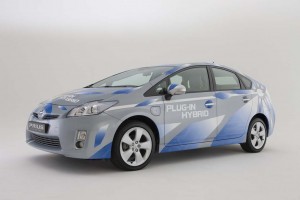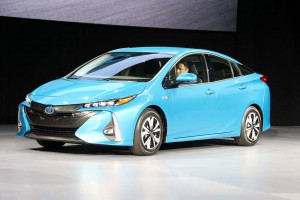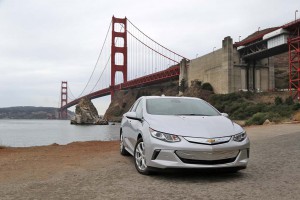(Ed. Note: Toyota has now clarified details of the U.S. launch. See details, below.)
Toyota Motor Co. is delaying the start of production for its new plug-in model, the Prius Prime.
The move is expected to push back the availability of the new model in the Japanese market. The U.S. launch, TheDetroitBureau.com has been advised, will begin in November, but will be slower than originally planned.
The exact reason for the delay hasn’t been stated, though spokesperson Kayo Doi was quoted telling reporters in Japan that, “We decided we want to take our time and more care before starting mass manufacturing.” The launch of production will be slower than original planned, a U.S. official added.
The Prius Prime is a plug-based version of the Toyota Prius hatchback which went through a complete redesign of its own for the 2016 model-year. While the conventional model can run on battery power for only short distances, and at low speeds, the Prius Prime gets a larger, 8.8 kilowatt-hour lithium-ion battery that increases electric-only range to 22 miles. And it can be operated at normal driving speeds.
That’s about double what the first-generation Toyota Prius Plug-in could manage – but still less than half of the 53-mile range offered by the second-generation Chevrolet Volt extended-range electric vehicle also launched for 2016.

With only a 13-mile battery range and a top speed of 62 mph in EV mode, few buyers opted for the original Prius Plug-in model.
(Chevrolet Volt sales finally top the 100,000 mark. Click Here for the latest.)
While Prius has long been the world’s best-selling conventional hybrid, the original plug-in version was little more than an asterisk on the sales charts. Whether the Toyota Prius Prime will do any better remains to be seen. Even the conventional Prius has suffered a sharp downturn in sales at a time when fuel prices are at decade-low levels. On the other hand, there’s been an upturn in overall plug-based vehicle sales this year, and Chevy sold about twice as many Volts last month as it did in January.
That’s encouraging proponents of battery power who note that dozens of other plug-in models are set to reach market by decade’s end. Globally, Mercedes-Benz alone has 10 plug-in hybrids planned for its line-up by the end of 2017.
Despite having a relatively limited range compared to many of the other plug-in hybrids, Toyota contends that 22 miles per charge will cover the daily commuting needs of about half of all Americans. And that could reach 80% if the vehicle were to be recharged during the workday.
(Toyota reveals Prius Prime at 2016 NY Auto Show. Click Here for more.)
Indeed, research shows that plug-in owners are frequent users of so-called “opportunity charging,” plugging in whenever the vehicle is idled and there’s a charger nearby. That’s one reason that Chevrolet estimates the average buyer of a 2016 Volt will go about 900 miles or more before needing to fill up the vehicle’s gas tank.
Toyota’s decision to delay the roll-out of the new Prius Prime is unusual, but not unprecedented. Especially in light of the company’s rare failure with the original Prius Plug-in, Toyota clearly wants to make sure that Prime is primed and ready to go, according to several observers.
The Japanese giant may be particularly nervous considering its long-stated concerns about lithium-ion battery power. The maker has largely resisted that more advanced technology in favor of time-tested – but less energy-dense — nickel-metal hydride batteries. But those can’t deliver the sort of range needed for a plug-in without seriously compromising cargo and passenger space.
Toyota officials have repeatedly stated their belief that the long-term, green future for the auto industry is hydrogen power. But limited availability of the lightweight gas means that, for now, the recently launched Toyota Mirai fuel-cell vehicle is only being offered through a few dealers in Southern California.
Toyota has been vague about plans for the Prius Prime, but it now says the Japanese launch will move from autumn to early next year. Bill Fay, the head of the Toyota brand in the U.S., initially said the Prius Prime would debut here “later this year” when the model was unveiled at the New York Auto Show. That has now been narrowed to sometime in November, but “The full volume inventory will just be slower than anticipated,” explained Detroit-based spokesman Rick Bourgoise.
Another unanswered question is what Toyota will charge. General Motors dropped the price of the Chevrolet Volt when the gen-2 model was launched last year. That model carries a base MSRP of $34,095 – before federal and state tax credits. With less than half the range, Toyota is expected to undercut the Volt when it does announce pricing.
(Used car buyers charged up about EVs, PHEVs and hybrids. Click Here for the story.)


